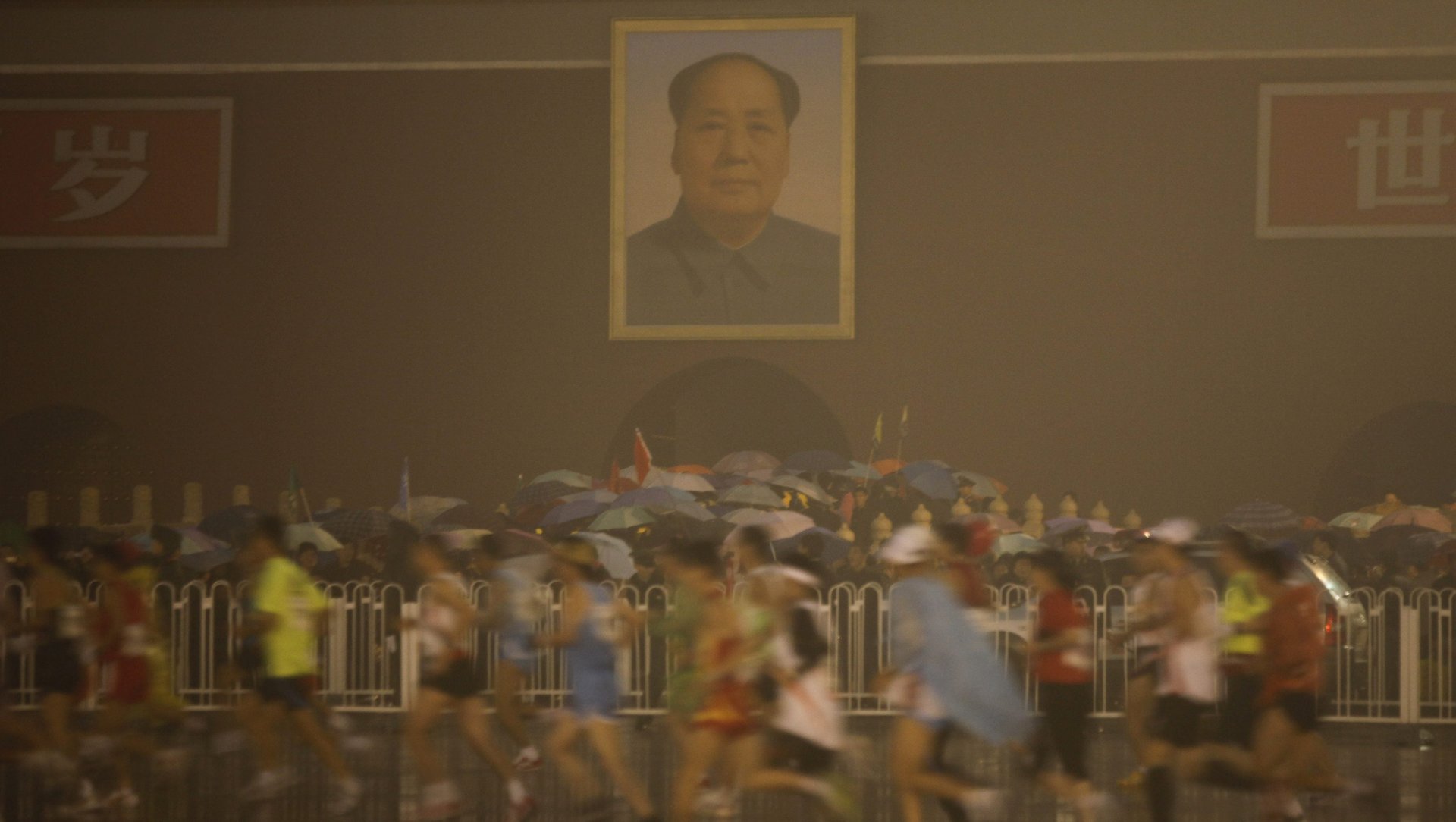Runners from around the world are flocking to marathons hosted by China’s most toxic cities
China is experiencing a boom in racing competitions in spite of serious pollution that often hovers above levels where doctors discourage running—or even going outside.


China is experiencing a boom in racing competitions in spite of serious pollution that often hovers above levels where doctors discourage running—or even going outside.
Running has become increasingly popular in China in recent years, thanks to a rising middle class who aspire to a healthier lifestyle, just like their western counterparts. The Chinese Athletic Association registered a total of 328 “marathon events,” races that include half marathons as well as running competitions varying from 2.8 kilometers to 100 kilometers (link in Chinese) last year. That was twice as many as existed the previous year.
Some 2.8 million runners participated, according to the association’s most recent report (link in Chinese), more than double the number in 2015.
For comparison, the US saw 7.3 million runners in 30,400 running events in 2016, according to a report by nonprofit industry observer Running USA.
It isn’t just Chinese runners who are participating. Avid runners from countries in Africa, including Uganda, Ethiopia and Kenya, are joining in too. In December, at the first-ever half-marathon race in China’s southeastern Chongqing province, 37-year-old Kenyan runner Menjo Josphat Kiprono (link in Chinese) took first place, clocking one hour and three minutes. Athletes from Japan, the US and Denmark were also among the top 20 female runners in the 2015 Shanghai International Marathon.
The increase is surprising, since China’s air pollution is infamous. Levels of PM2.5, tiny particulate matter that can travel deep into airways and reach the lungs, are particularly worrying in many cities. And China’s most popular sites for marathons, including cities like Beijing and Shanghai, also happen to be some of its most polluted.
During Beijing’s annual marathon in 2015, more than 30,000 runners were exposed to an air-quality index (AQI) level of 216, considered “very unhealthy” by the US Environmental Protection Agency (EPA). When AQI, an indicator of several air pollutants including particulate matter, passes 200, it’s generally recommended that people avoid “all outdoor exertion,” according to Air Quality Information in China, a real-time air-quality monitoring project by the EPA.
Bernhard Schwartlander, head of the World Health Organization’s China office told The Wall Street Journal (link in Chinese) in 2015 that he would “likely exercise indoors” at an AQI of 200.
In 2016, the annual PM2.5 average for the main cities of the provinces with the largest number of race events—average levels for the entire province aren’t available—exceeded 10 micrograms per cubic meter, the highest level deemed acceptable for human health by the World Health Organization (WHO).
While air quality has been improving (at the 2014 Beijing marathon, the AQI was at 352 at one point), according to environmental watchdog Greenpeace, all of these six places will take at least another decade to reach the WHO’s recommended levels for PM2.5. Beijing, for example, will require another 29 years to achieve that.
Still, authorities don’t seem to think marathon participants will be deterred. “We hope to throw over 400 marathon events by the end of this year, and over 800 by 2020, with more than 10 million participants,” Du Shaocai, the vice chairman of Chinese Athletic Association, said last month (link in Chinese) .